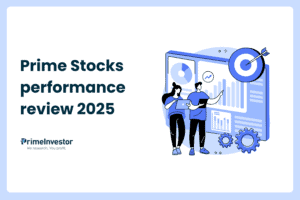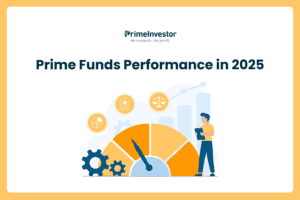If you watched any cricket in the past few days, you could not have missed the ad from a prominent fund house, extolling the virtues of (their) balanced advantage funds. These funds seem to be the new must-have these days. Whether its AMCs, fund managers, media, or your neighbour, the advice is that the best way to manage current markets and protect your returns is to add a balanced advantage/ dynamic asset allocation fund to your portfolio. So, should you?

If a product were simple, it easy to answer this question. But if a product does asset allocation, promises to dynamically manage such allocation based on market conditions and promises less falls, then the question becomes:
- Does this fit into your time frame?
- Does it gel with your own asset allocation?
- Does it suit your return requirement?
Let’s break it down. Please note that when we say balanced advantage funds, we’re including dynamic asset allocation funds as well.
The role of balanced advantage funds
We have explained in detail earlier about what balanced advantage funds do. We’re not delving into that aspect. We’ll instead explore what these funds bring to a portfolio.
The primary role these funds play is to limit the extent to which your overall portfolio returns can fall in a correcting market and reduce overall portfolio volatility. These funds fit this role as they are not invested entirely in equity, and hedge equity through derivatives and debt. The levels of debt, derivatives and unhedged equity are decided based on each AMC’s in-house valuation models. If markets are overheated, then funds hedge their portfolios more (less of cash equities) do the reverse when valuations are attractive. Therefore, this seems like the perfect recipe given where markets are now and if you’re worried about corrections.
Now for a reality check.
#1 Each fund differs in its call on market direction
The level of hedging and debt exposure varies widely between funds. There is no uniformity in the category or on their calls on valuations. In December 2020, for example, unhedged equity ranges from less than 25% to over 70% (see table below). A fund may be very aggressive, conservative or somewhere in between.
Two, you have no way of knowing what allocations the fund is going to make in any given month or market cycle, and nor do you have any control over it. So, while you may think markets are overvalued, the fund may well continue to be aggressive. The table below shows how much allocations vary, both between funds and over the months.
Three, the fund can also change strategies based on markets, return potential, and their own models. For example, we had a balanced advantage fund in our Hybrid – Low Risk category in Prime Funds; we added it here because the fund was among the most consistent in containing downsides and was not overtly aggressive. We then had to move it to Hybrid – Moderate Risk because the fund was getting more aggressive and was therefore not doing as well as others in limiting declines or containing volatility.
#2 Balanced advantage funds can fall, and fall sharply.
A big reason you want to go for a balanced advantage fund now is because you’re worried about market falls and valuations. But know this – just because a fund hedges does not mean that it will not fall. Further, given the differences in hedged/debt exposure, there are stark differences in how much balanced advantage funds fall. An aggressive fund will see higher volatility and steeper falls.
This apart, valuations become attractive in falling markets. These funds are therefore going to increase equity in corrections, which means that they are also going to dip. If you got into these funds thinking that they will stay strong as markets correct, that may not happen. And if you get into them thinking that your portfolio can take advantage of their dynamic nature, that’s a point we’ll address further down in this article.
Take March 2020. In this period, the biggest 1-month loss was 31.9%. That’s as much as the average 31.2% loss that large-cap funds suffered, and close to the Nifty 50’s 34% loss. In fact, 9 of the 21 funds in the category fell more than 20% in a month. The smallest loss was 11.6%.
Between March and May 2020, funds had more than 65% in unhedged equity exposure. So, you need to be very careful in what fund you’re choosing because the category uniformly does not excel at keeping losses in check. And here again, remember that funds can change their nature, as explained above.
#3 Balanced advantage funds may limit upsides.
If a fund is not entirely invested in equity, this also means that participation in market rallies will also be capped. The balanced advantage category has a limited history; it came into being in 2018. Before this time, several hybrid funds did follow an equity-derivative-debt combination but weren’t very defined in allocations or strategy. Because of the lack of relevant history, the long-term return potential for these funds is not clear.
But let’s consider the current equity savings and balanced advantage categories. The earlier balanced funds that took derivative calls fell into one of these two categories. So looking at the long-term returns here can give some idea of their potential. The graph below shows the average 3-year return for large-cap funds (the least volatile among equity funds) and the balanced advantage plus equity savings categories. As you will see, while balanced advantage funds can contain downsides, the other side of the coin is that they may not deliver on upsides.
Asset allocation matters
After the sharp sell-off last March, stocks’ rapid recovery naturally leads to hesitation now. That’s fine. But the approach to booking profits and reducing your portfolio’s risk does not equate to shifting to balanced advantage funds. The one factor that matters here is your asset allocation.
We had given a book profit call in August last year, and repeated the call in our equity outlook for this year. But we also explained how you should go about booking profits – which is to go back to your asset allocation. Where equity is high, prune exposure back to original/desired levels. Where mid-caps/small-caps have rallied, move back to original allocations. And do not stop SIPs.
Why are we insistent on asset allocation?
- One, it reflects the extent of risk that you can (and should) take for your goal. It determines how much equity you can have based on the time you have to let equity to deliver and take into stride market falls, and how much debt should shore up your returns.
- Two, it helps reduce portfolio volatility and contain downsides. This is exactly what you’re looking for in overheated markets. It diversifies your return so you’re not dependent on only one asset class delivering.
- Three, it helps you know when to book profits. You pull out of equity to the extent that it has gone beyond what you’re comfortable with, gets you to reduce risk, and lock in to profits.
- And four, it significantly reduces the need to time markets. When you want to move to balanced advantage from equity, it means you’re trying to time exit (and entry later). But markets don’t have to move the way you think they should. All fundamentals pointed to excessive valuations last year, which was the reason we issued a book profit call. Markets continued to rally. If you tried to exit equity because markets are at a high, you may miss rallies and can also find it difficult to move back in.
This is why we say (in our book profit strategy) rebalance to original asset allocation to book profits and yet participate in equity.
You might counter that you don’t want to shift out of equity, but want to add a balanced advantage fund to take the benefit of its dynamic allocation. That’s fine, but by making small allocations, how much is the dynamic nature going to help your portfolio? Look at the portfolio below, which has a 65-35 equity-debt allocation.
Now, the worst 1-year return this portfolio delivered in the past 4 years is -20%. Now, let’s say we added 5% in DSP Dynamic Asset Allocation (proportionately reducing the three index funds). This fund is adept at containing downsides, is among the more conservative, and uses a fundamental-technical blend of indicators to shift between equity, derivatives, and debt. But even with this dynamic shifting, the portfolio’s overall loss wouldn’t be too different at 19%. Only at an allocation of 15% would the impact be significant at a 16% loss.
To get to this allocation, you may have to either exit a good portion of your equity funds and reinvest in dynamic asset allocation or make significant fresh investments. And remember, you will never get the upside that equities deliver. In the example above, the equity exposure effectively comes down to about 58%. In a rally, especially like the one now, driven by liquidity and by sudden bounce back in the economy, the lower equity exposure can hurt.
What should you do?
Your portfolio should be a reflection of your risk level and timeframe. It is not just your behaviour in falling markets that shows your risk capacity – rising markets also are a test.
The simple solution is – don’t give in to hype.
Hybrid aggressive funds were similarly loved and sought after during 2016 and 2017. They fell spectacularly from grace in 2018 by sliding below even large-cap funds and are yet to recover consistent performance.
Balanced advantage funds are not a magic wand to wave away all stock-market volatility. They have their specific uses. They are ideal for time frame of 2-3 years or so, where you cannot afford high equities. Or you may fancy this as a low-risk option in your equity portfolio. To know exactly how to fit balanced advantage funds in your portfolio, please read our detailed article on the same. In Prime Funds, the two Hybrid categories house the funds we recommend in this space.
Don’t constantly change your portfolio based on your perception of equity or debt market movements. Accept that timing stock markets is hard to get right and that markets can rally much longer, or stay down much longer, than you bargained for. Asset allocation, category allocation, and fund allocation serve a purpose, which is to meet your risk/timeframe requirements and deliver across cycles.
Use simple rules like:
- rebalancing to book profits
- setting aside some surplus in liquid funds to deploy when markets correct
- reducing equity when your goal is near
- and reviewing every year.
Relevant Article : How to build a Stock Portfolio?




39 thoughts on “Should you invest in balanced advantage funds now?”
from the graph you have presented, it merits moving into BAF when the largecap graph crosses down the BAF graph and moving out of it when largecap graph cuts above BAF, would be keen to know if this is a practical apprach that can be implemented too
The purpose of the graph is to show how pure equity will generate more on the upside and therefore allocating too much to BAF will cap returns. Graphs like these will always tell you highs and lows in hindsight, it’s hard to do it in reality. The large-cap will move below BAF when markets correct. – thanks, Bhavana
My mutual fund strategy is too use 3-4 flexi cap fund and 2-3 mid / small fund and keep debt in other instruments like SSA / PPF/ NPS and 10% in gold as SGB. For time frame for all wealth creation keep For 5-7 yrs is it good strategy or need some modifications? Please advice
If you’re a subscriber, please write to us with your queries. We prefer this route to answering queries such as these. This blog is meant more as a discussion medium. – thanks, Bhavana
Hi Bhavana, Quick view from your experience, is the SWP good to have a regular income with a staggered investment say 10-15 lakh and withdraw say 20-25K per month. Still the corpus get some sort of appreciation (may be, better than bank FD’s?). If so, what strategy is recommended for SWP fund selection? Thanks Siva
We have covered SWP in detail here: https://www.primeinvestor.in/swp-a-low-tax-option-to-generate-income/ You can also look at our income portfolios or retiree portfolios (www.primeinvestor.in/prime-portfolio-home) for ideas.
Thanks,
Bhavana
Hello Bhavana, Did you read the 18th Feb fund allocation strategy change commnication from ICICI Pru, looks similar to some sort of rebalancing in advance or as they see the risk. Am not sure or got the actual rebalancing strategy they are adopting except a client communication. Did you have any comments?
Balanced advantage or dynamic asset allocation funds aim to change allocations using different metrics that signal expensive or reasonably valued markets. In a manner of speaking, they all try to recognise and react to risks before they actually transpire. Whether or not they succeed is a different point. Reg IPru Balanced Advantage, there is no material change in the risk profile. The changes involve allowing the fund to invest in other instruments with similar risk strategies or introduction of newer hedging options. Funds change mandates to allow them to invest in some instruments – does not mean they necessarily will…just gives them the ability to, if they see opportunities.
Thanks,
Bhavana
I have a question – since equity valuation is high, can we shift some amount to Arbitrage fund or equity savings fund. Also, Edelweiss BAF is another strange fund, they go pro-cylical, increase equity when markets go up, do you think it works or it is just another equity fund labelled as BAF? For equity savings fund, how is Edelweiss Equity savings fund, as it seems to have good downside protection.
Whether you shift to arbitrage, equity savings, or balanced advantage, the fact is still that you’re trying to time markets. Valuations can stay high for a very long time, or it can correct. You simply have no way of knowing this beforehand. Your asset allocation, and rebalancing, is the safest way to book profits and still participate in any rally. This is the basic point we’re trying to make in the second half of the article (asset allocation & what should you do).
Please use our MF Review Tool for our buy/sell/hold calls on funds.
Thanks,
Bhavana
Thanks for the great article, Bhavana! And at an appropriate time too.
Is this understanding/conclusion correct: “having a good enough allocation (say 10-15%) to a BAF, along with other equity/debt funds (as per asset allocation) is the only way to derive BAF’s benefits of downside protection and participation in equity (albeit lesser than pure equity funds)”.
Also, would you kindly comment on Edelweiss BAF? Is this on your radar and it’s pro-cyclical model with some trend based parameters to decide equity allocation? The fund seems to have contained losses better in March downfall and doing good in the current bull market too (though this may be a narrow time frame to evaluate).
Balanced advantage funds are just another option to diversify your portfolio and reduce equity-linked volatility. All we’re saying is – don’t assume BAF will completely shield you from correcting markets, and don’t try and time markets by shifting in and out of these funds. These funds can play a role in your portfolio, if you wish to include them. Our other linked article on the category will explain how.
Edelweiss BAF’s approach is to take a call on direction ahead of its occurring. It has both worked well as well as led to underperformance in the past. Please use our MF Review Tool for our calls on funds.
Thanks,
Bhavana
Excellent analysis. If someone wants to reduce equity exposure due to high valuations and wants to hide in debt, which debt category you recommend for next 1-2 years
If you mean just to park on the sidelines (to move back to quity) then nothing more than liquid or ultra short. But if you mean rebalancing, then it should be your existing debt funds (read our article on rebalancing) https://www.primeinvestor.in/how-to-rebalance-your-portfolio/. thanks. Vidya
This kind of analysis on balance fund was never covered any other website. very useful.
Thanks, sir. We aim to tell it like it is 🙂 Regards, Bhavana
Comments are closed.